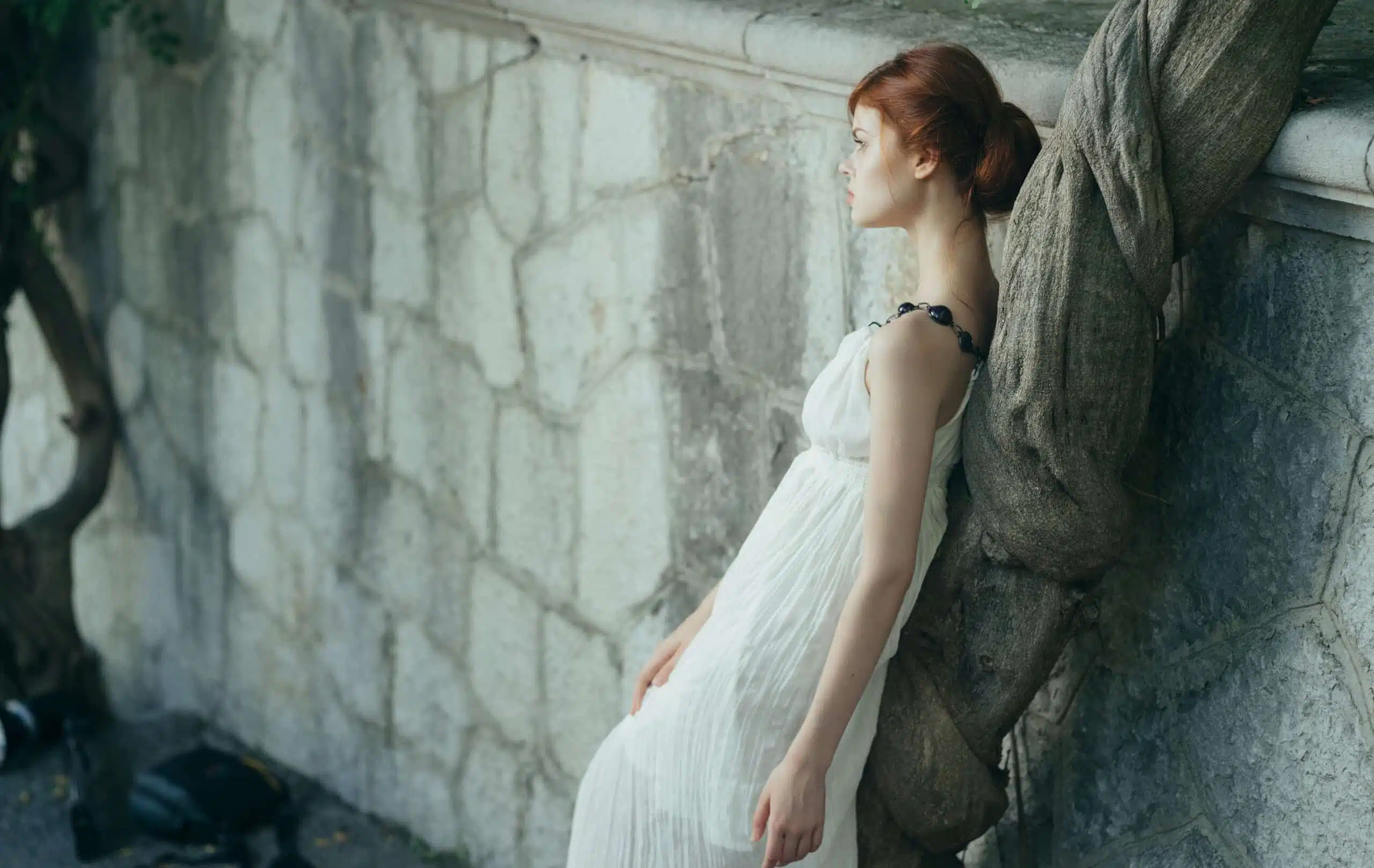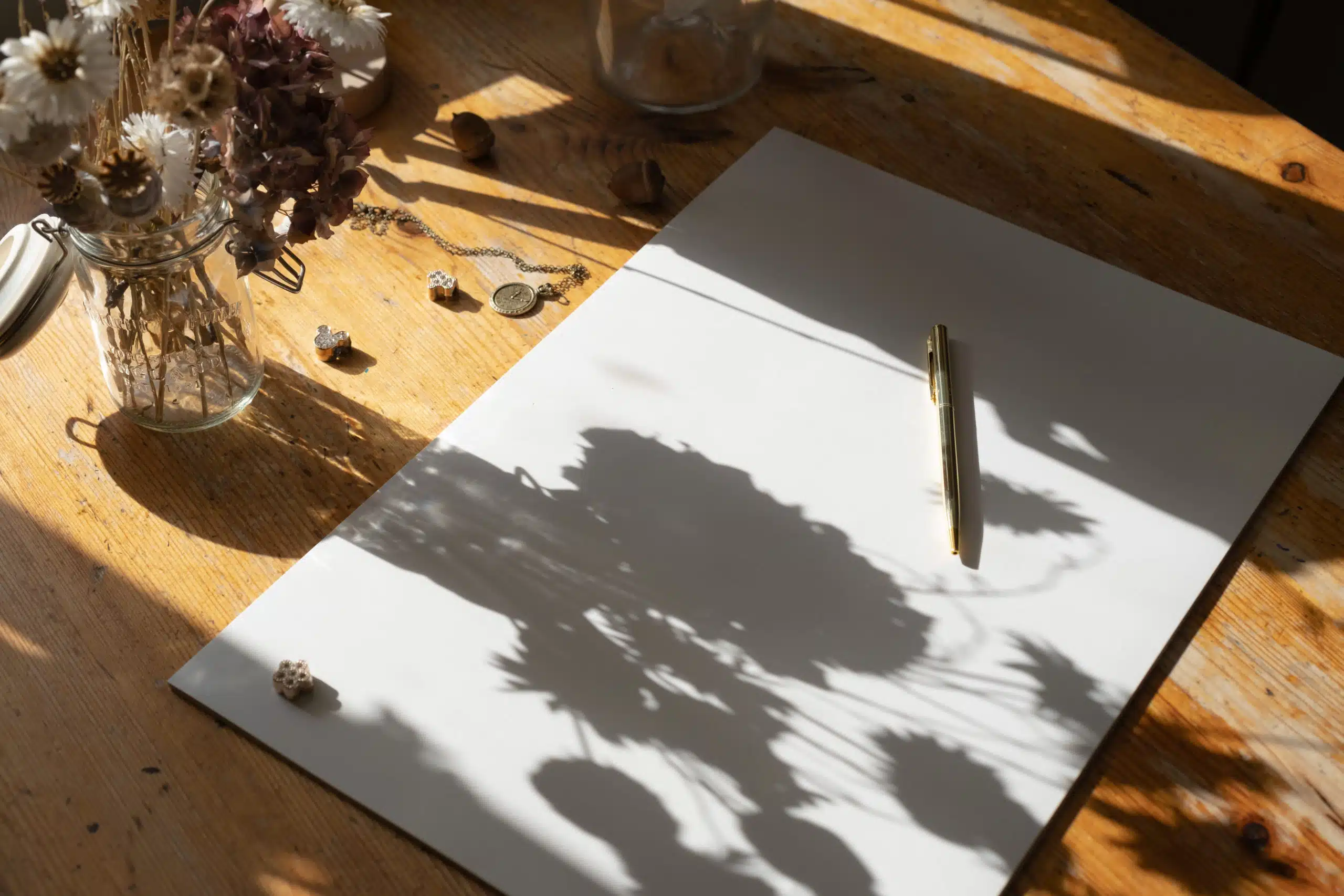Here’s what the Ekphrastic poetry form is:
Ekphrastic poetry is a written expression of a visual form of art.
In ancient Greece, they use the ekphrasis technique to write about or verbalize momentous events, history, or a work of art.
Because ekphrastic poems are a way to creatively articulate art or significant scenes or events, this poem type is usually imaginative, vivid, and quite dramatic.
So if you want to learn all about the Ekphrastic poetry type, then you’ve come to the right place.
Keep reading!

Forms of Poetry: The Ekphrastic

Ekphrasis is essentially a literary description of a work of art, like painting a picture with words.
An artistic piece of work can be a song inspired by a short story, a painting inspired by a sculpture, a poem inspired by a painting, etc.
The main appeal and challenge of an ekphrastic poem are in the limitations of poetry as a form.
Since poetry is strictly an art that must be imagined in the head, capturing the vivid imagery of a painting or the delicate curves of a sculpture with only words represents an extraordinary challenge.
If there is anything that creative minds love, it’s a challenge.
That alone is enough to keep this subgenre alive and well, as poets all over the world try desperately to make their words bend over backward to do things that words shouldn’t be able to do.
Basic Properties of Ekphrastic Poetry

| Rhyme Structure | Optional |
| Meter | Optional |
| Origin | At least as old as ancient Greece |
| Popularity | Varies; usually at its peaks in cultures where art is highly prized |
| Theme | Dedicated mostly to physical forms and interpretations of art |
How Are Ekphrastic Poems Structured?

Unlike many traditional forms, ekphrastic poetry is functionally a genre of poetry.
What this means in terms of structure is that they are, for all intents and purposes, free verse poems.
An ekphrastic poem can appear in any traditional form, such as a sonnet, but there is no one agreed-upon “best” way to structure an ekphrastic poem.
With that being said, ekphrastic poems do tend to follow a few templates.
The poet usually introduces the concrete imagery of the poem first or at least opens with some identifying image that hooks the reader.
This might be a summarizing line, such as referring to the subject of the original art, or it might be bits and pieces of the work that stand out to the writer.
From there, the poet will generally start reflecting on the image or details that they initially presented.
An ekphrastic poem can be about a real object, such as a famous painting or a humble park bench, or it can even be about a fictional object that the writer creates through the description.
Either way, the majority of ekphrastic poems will keep to lines that flow from the image into reflection and back again, as description and artistic interpretation are the main pillars of ekphrasis.
History of Ekphrasis

One of the most famous examples of ekphrasis begins with Plato’s musings over form.
In the Republic, Plato was both the originator of the term and the originator of the practice.
This began with his attempt to explain how real things have a sort of innate connection to the ideal forms that the craftsman pursues.
So a bed, for example, is judged on how well it represents the “idea” of a bed, even as the creation of new beds gradually moves the image of the ideal form.
This philosophical form of ekphrasis would largely give way to an artistic interpretation in which the essence of an object, scene, or work of art must be captured by the writer, to the best of their ability.
The popularity of ekphrasis fluctuated with the importance of art in general.
Ekphrastic poems, specifically, can be traced back at least to Homer, who lovingly describes the Shield of Achilles in the Iliad over the course of dozens of lines.
Scholars still debate over the apparent significance of the shield to this day.
The Renaissance, for example, was a time when ekphrasis was especially popular.
Allusions to paintings, in particular, tended to pop up in plays, songs, and poems of the era in scattered doses.
This rise of ekphrasis seems to directly correlate with the increased social value of art.
When society’s interest in art is at a peak, art about art naturally becomes more common.
Romanticism also saw a concurrent increase in ekphrastic poetry as Romantics famously obsessed over imagery and idealization, concepts that naturally lend themselves to ekphrasis.
Example of an Ekphrastic

One famous example of an ekphrastic poem that traces itself to this movement is Keats’ “Ode on a Grecian Urn.”
From Ode on a Grecian Urn by John Keats
Thou still unravish’d bride of quietness,
Thou foster-child of silence and slow time,
Sylvan historian, who canst thus express
A flowery tale more sweetly than our rhyme:
What leaf-fring’d legend haunts about thy shape
Of deities or mortals, or of both,
In Tempe or the dales of Arcady?
What men or gods are these? What maidens loth?
What mad pursuit? What struggle to escape?
What pipes and timbrels? What wild ecstasy?
Above is the first stanza from that famous poem, which is easily one of the most well-regarded ekphrastic poems of all time.
In the poem, Keats carefully describes a variety of images that one might see on a Grecian urn, such as the “men or gods” who adorn it but take special note of how many liberties are taken in its description.
Rather than focus entirely on the physical, the poem indulges in thoughts and reflections about the urn.
When Keats refers to it as a “Sylvan historian” he is giving the urn an identity and a purpose that reflects his ideal of an urn, more so than its actual definable qualities.
This is something unique to ekphrasis, since an urn is naturally unable to comment on itself and is left open to the poet’s interpretations, whether wild or mundane.
Written works seem especially concerned with trying to capture visual forms, such as paintings and sculptures, perhaps because writers are naturally drawn to imagery as a critical technique.
Tips for Writing an Ekphrastic Poem

The first and most obvious tip is that an ekphrastic poem must come from a place of heartfelt inspiration.
Receiving inspiration from a work of art or similar subject requires that you open your heart and mind to the image, allowing yourself to obsess over what it might mean and how its details speak to you.
One important thing to remember is that simply describing the physical structures cannot convey everything that you might potentially have to say.
You could spend hours describing every bump and crevasse of a Victorian townhouse, only to not say anything.
Unless you’re willing to think deeper than that, perhaps on what memories the building’s imperfections might contain or on what the architect’s thoughts may have been as he looked at the finished building, for example.
A successful ekphrastic poem requires you to know the strengths and weaknesses of poetry intimately.
Poetry allows us to whisper thoughts directly into a person’s head, so you need to take advantage of that.
Going back to Keats’ “Ode on a Grecian Urn” take special note of how he focuses less on the concrete imagery of the urn and more on the urn’s history and meanings.

Whereas a painting or a sculpture only exists in its current form and presents a sharp moment, poetry can reach back to the origins of the image or forward to its implications, allowing for deep reflections that go beyond what is simply “there.”
If you only try to capture the physical appearance of a painting, then your poem will ultimately feel hollow because the painting already describes its own appearance perfectly in a way a poem can never compete with.
A poem about the painting should instead dive into daydreams and narratives that the painting isn’t equipped to tell by itself, to complement the original work.
An ekphrastic about a fictional work should similarly serve some purpose unique to that ekphrastic.
Describing a sculpture that your character walks by shouldn’t just be about the sculpture.
It should showcase how the character thinks and feels, or provide some insight into the implications of the setting the character finds themselves in.
Ekphrastic poetry is a challenging art but the main question you have to ask yourself is simply, “Did I capture something about the subject that’s unique to my perspective?”
Do not settle for any less than that.
Poet’s Note

If someone wrote a song about you writing a poem about a sculpture, then it would be an ekphrastic song about an ekphrastic poem.
I’m not saying this bit of trivia has any real-world application, but it is kind of interesting.
Comprehensive Collection of Poetry Forms: Craft Words Into Art

Dare to traverse the entire spectrum of poetic forms, from the commonplace to the extraordinary?
Venture from the quintessential Sonnet to the elusive Mistress Bradstreet stanza, right through to the daunting complexity of Cro Cumaisc Etir Casbairdni Ocus Lethrannaigecht.
For those with a zeal to encounter the full breadth of poetry’s forms, this invitation is yours.
Start exploring the vast universe of poetic ingenuity with our comprehensive array of poetry forms right now!
